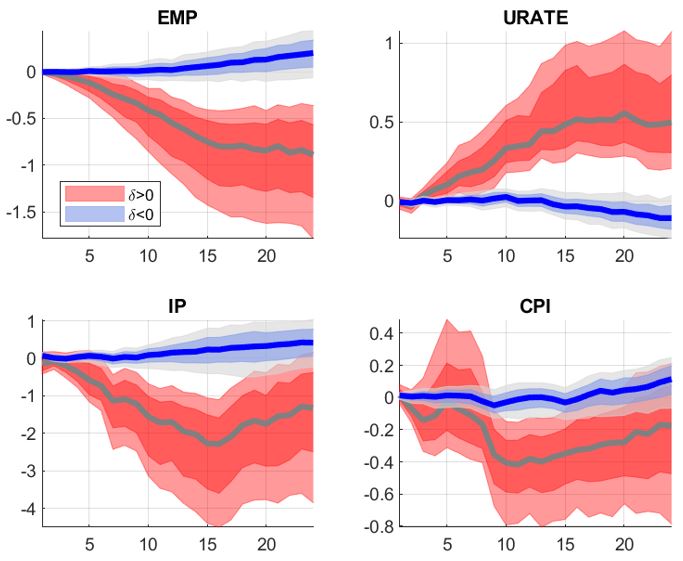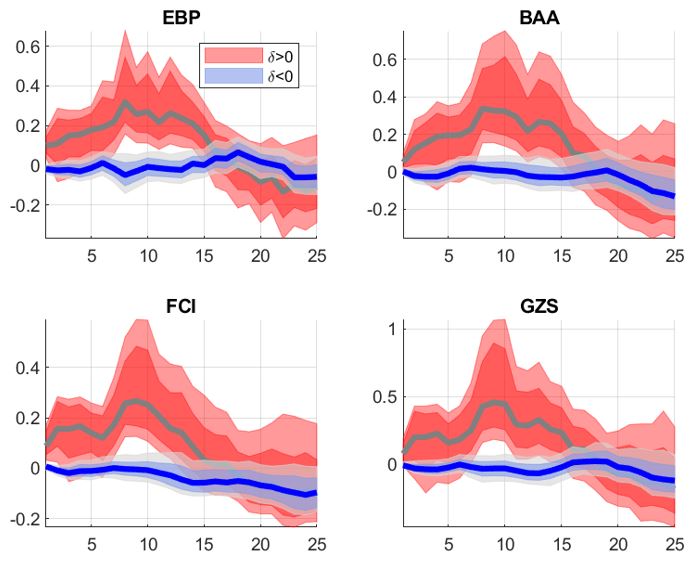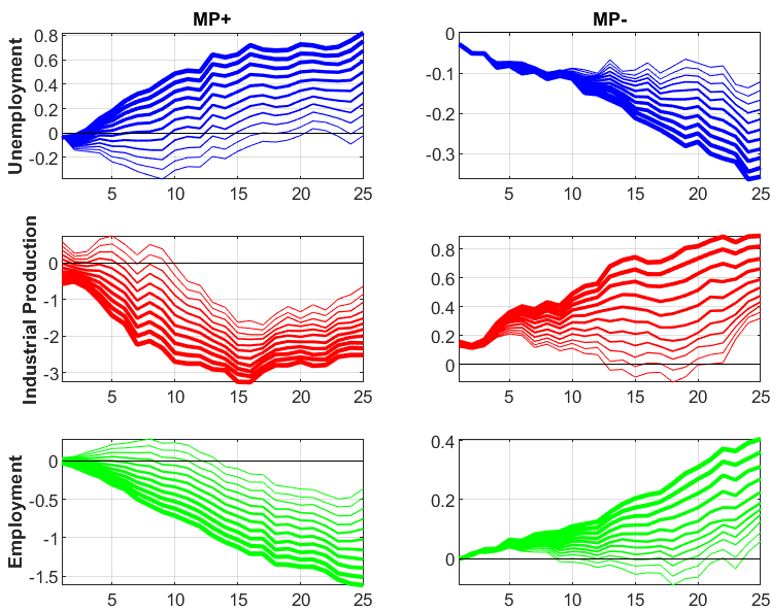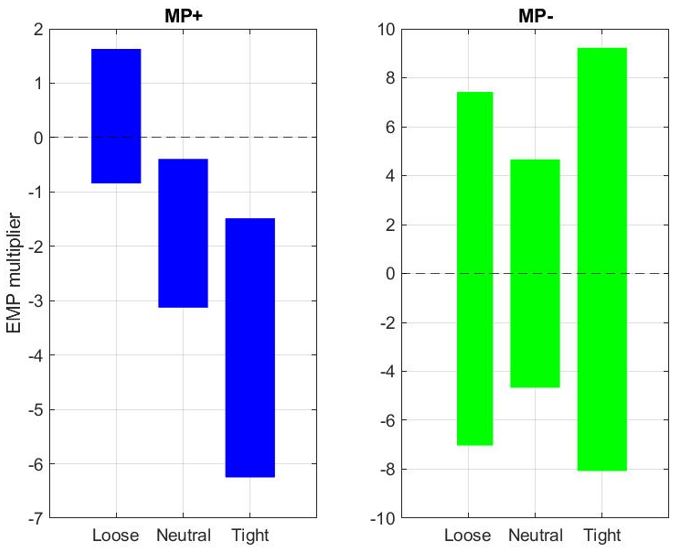References
Angrist, J. D., O. Jordà, and G. M. Kuersteiner (2018): “Semiparametric estimates of monetary policy effects: string theory revisited,” Journal of Business & Economic Statistics, 36(3), 371–387.
Caldara, D., and E. Herbst (2019): “Monetary Policy, Real Activity, and Credit Spreads: Evidence from Bayesian Proxy SVARs,” American Economic Journal: Macroeconomics, 11(1), 157–192.
Cloyne, J., O. Jordà, and A. M. Taylor (2020): “Decomposing the Fiscal Multiplier,” Working paper series, Federal Reserve Bank of San Francisco.
Gilchrist, S., and E. Zakrajsek (2012): “Credit Spreads and Business Cycle Fluctuations,” American Economic Review, 102(4), 1692–1720.
Gonçalves, S., A. M. Herrera, L. Kilian, and E. Pesavento (2021): “Impulse response analysis for structural dynamic models with nonlinear regressors,” Journal of Econometrics, 225(1), 107–130.
Jarocinski, M., and P. Karadi (2020): “Deconstructing monetary policy surprises—the role of information shocks,” American Economic Journal: Macroeconomics, 12(2), 1–43.
Jordà, O. (2005): “Estimation and Inference of Impulse Responses by Local Projections,” American Economic Review, 95(1), 161–182.
Miranda-Agrippino, S., and G. Ricco (2021): “The Transmission of Monetary Policy Shocks,” American Economic Journal: Macroeconomics, 13(3), 74–107.
Tenreyro, S., and G. Thwaites (2016): “Pushing on a String: US Monetary Policy Is Less Powerful in Recessions,” American Economic Journal: Macroeconomics, 8(4), 43–74.









